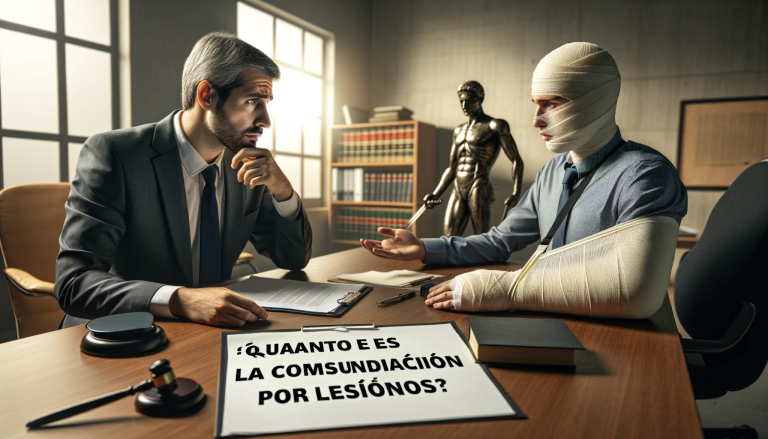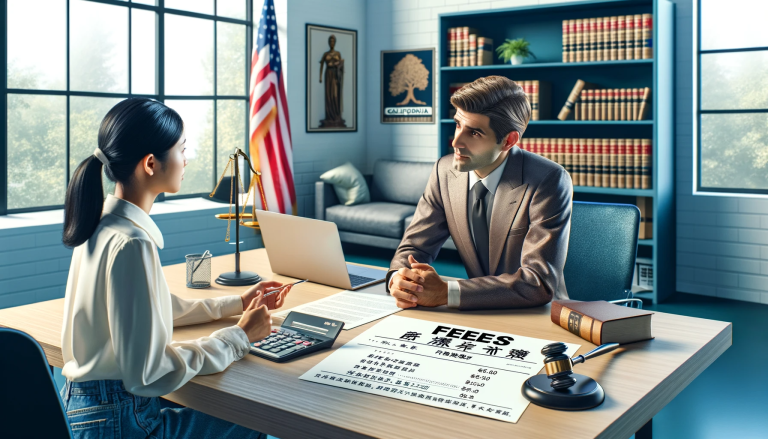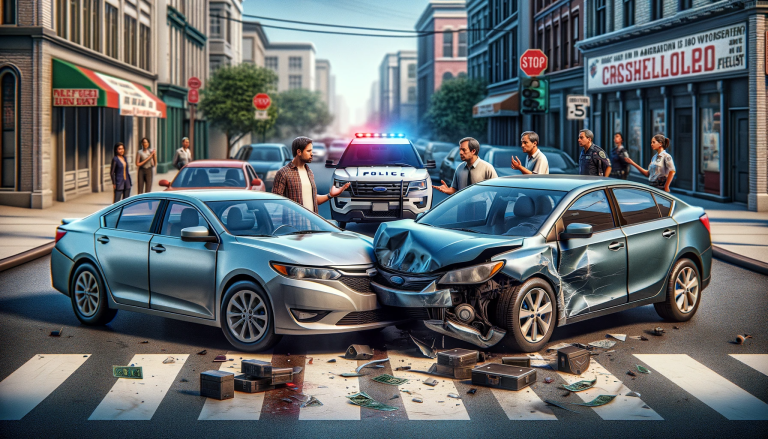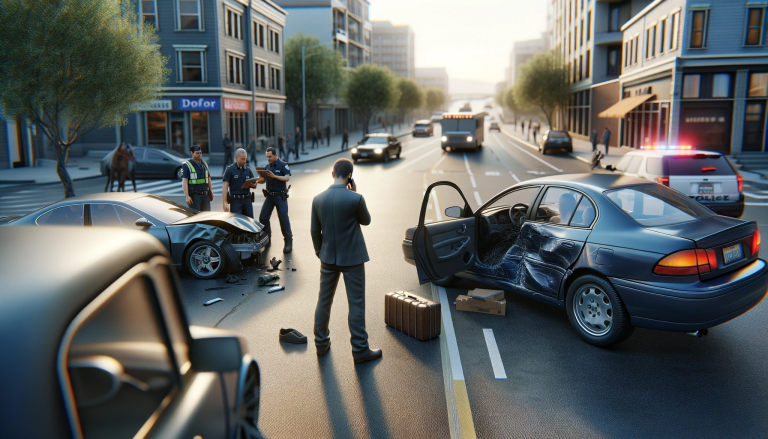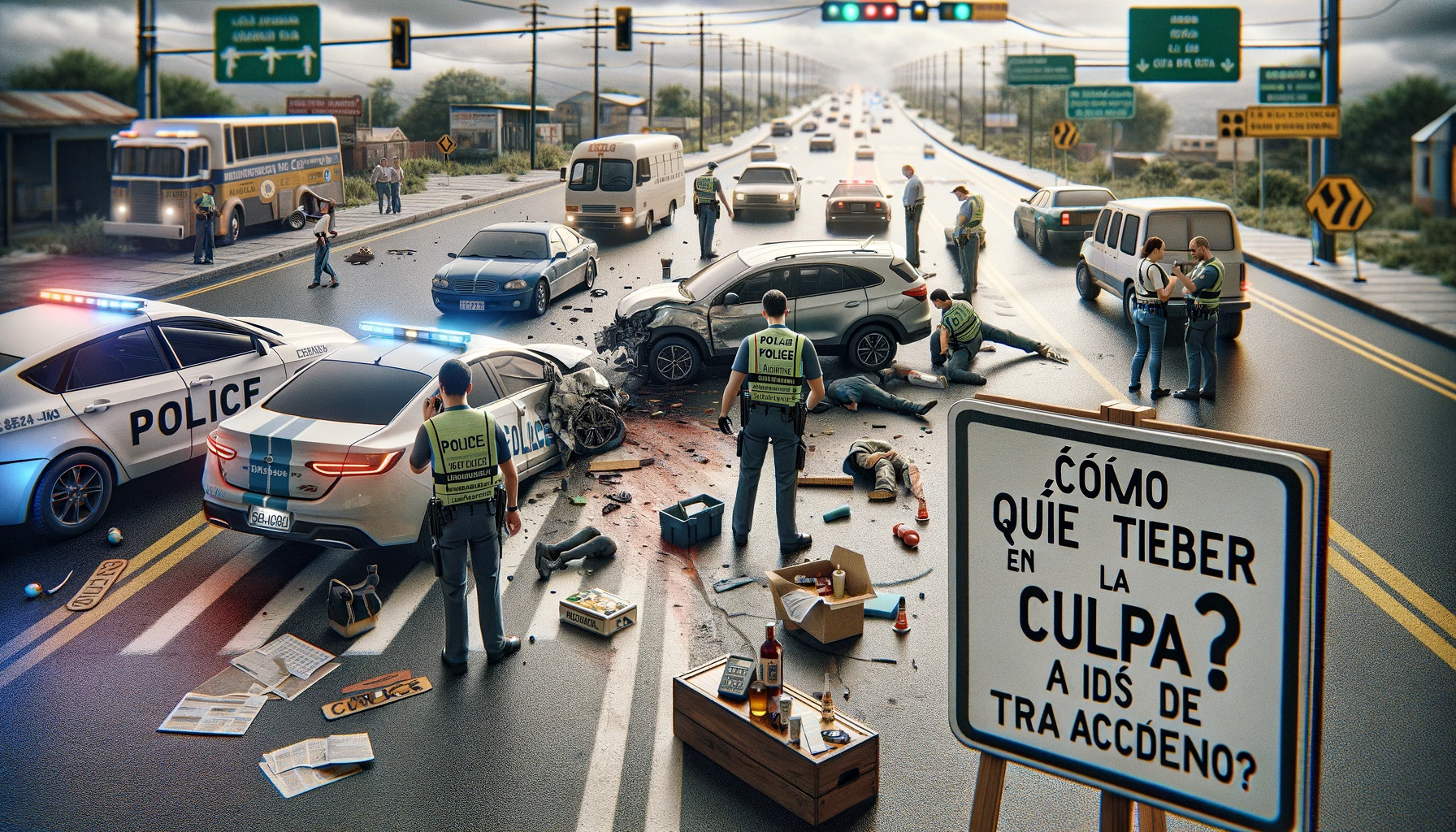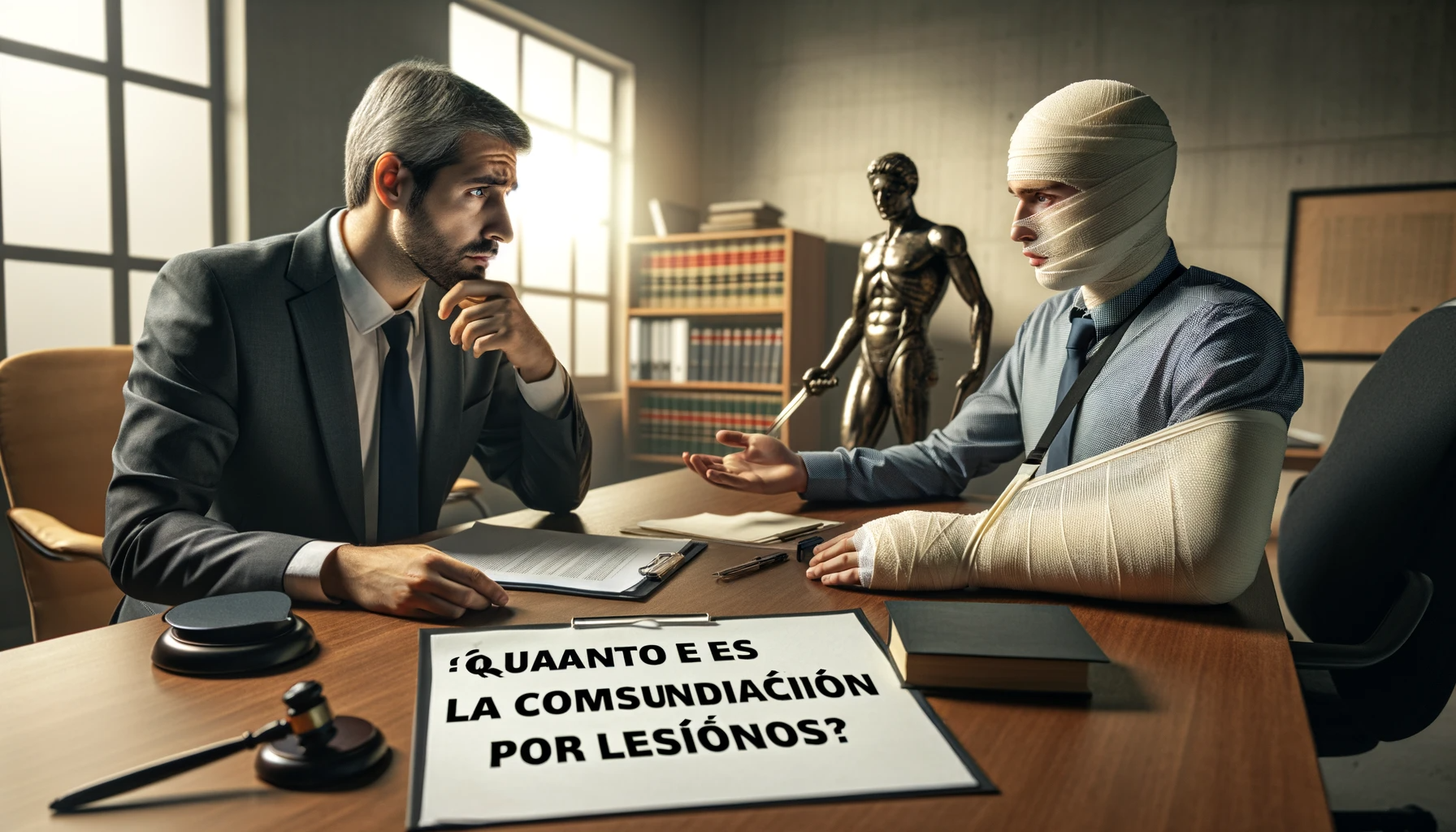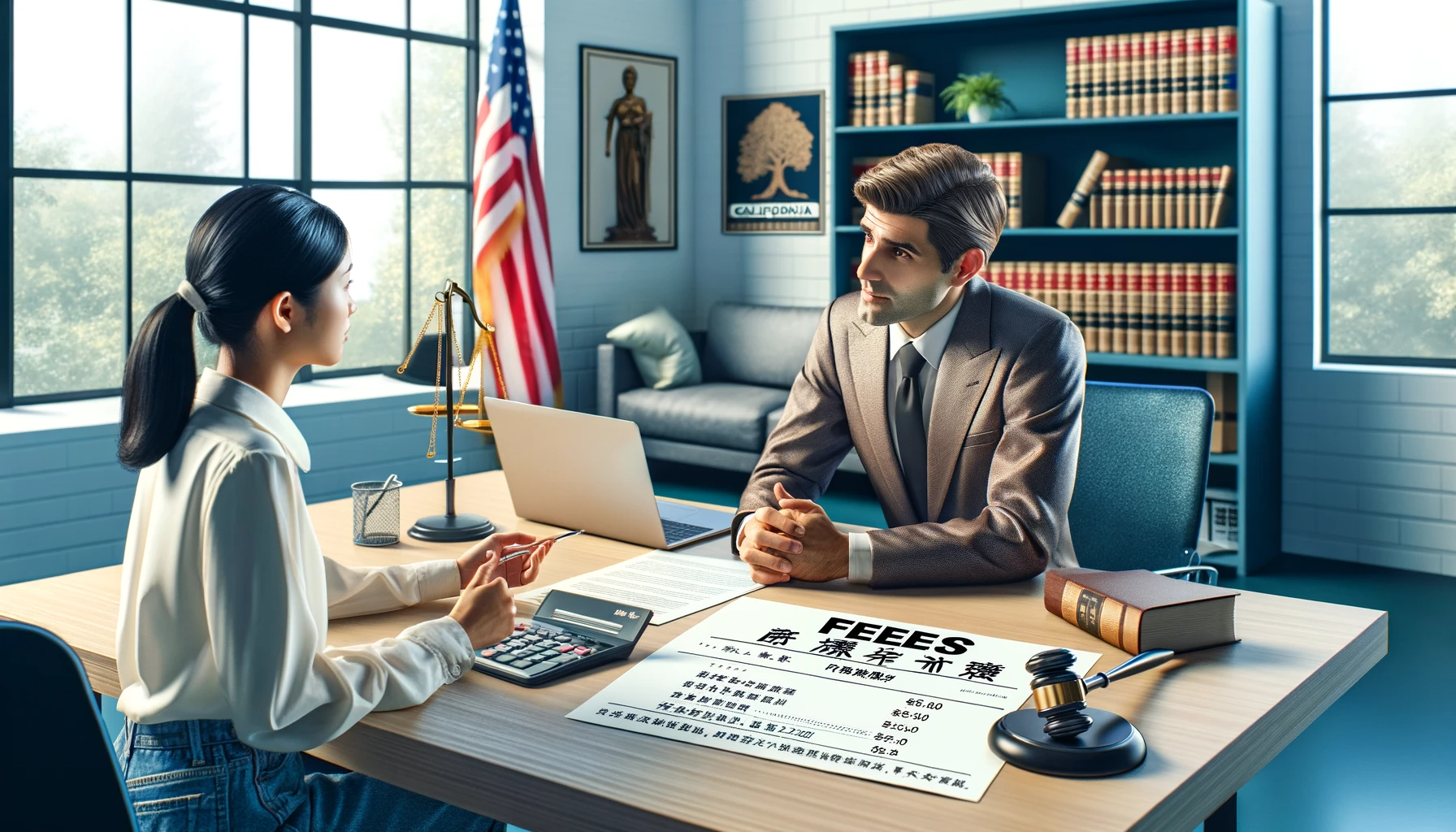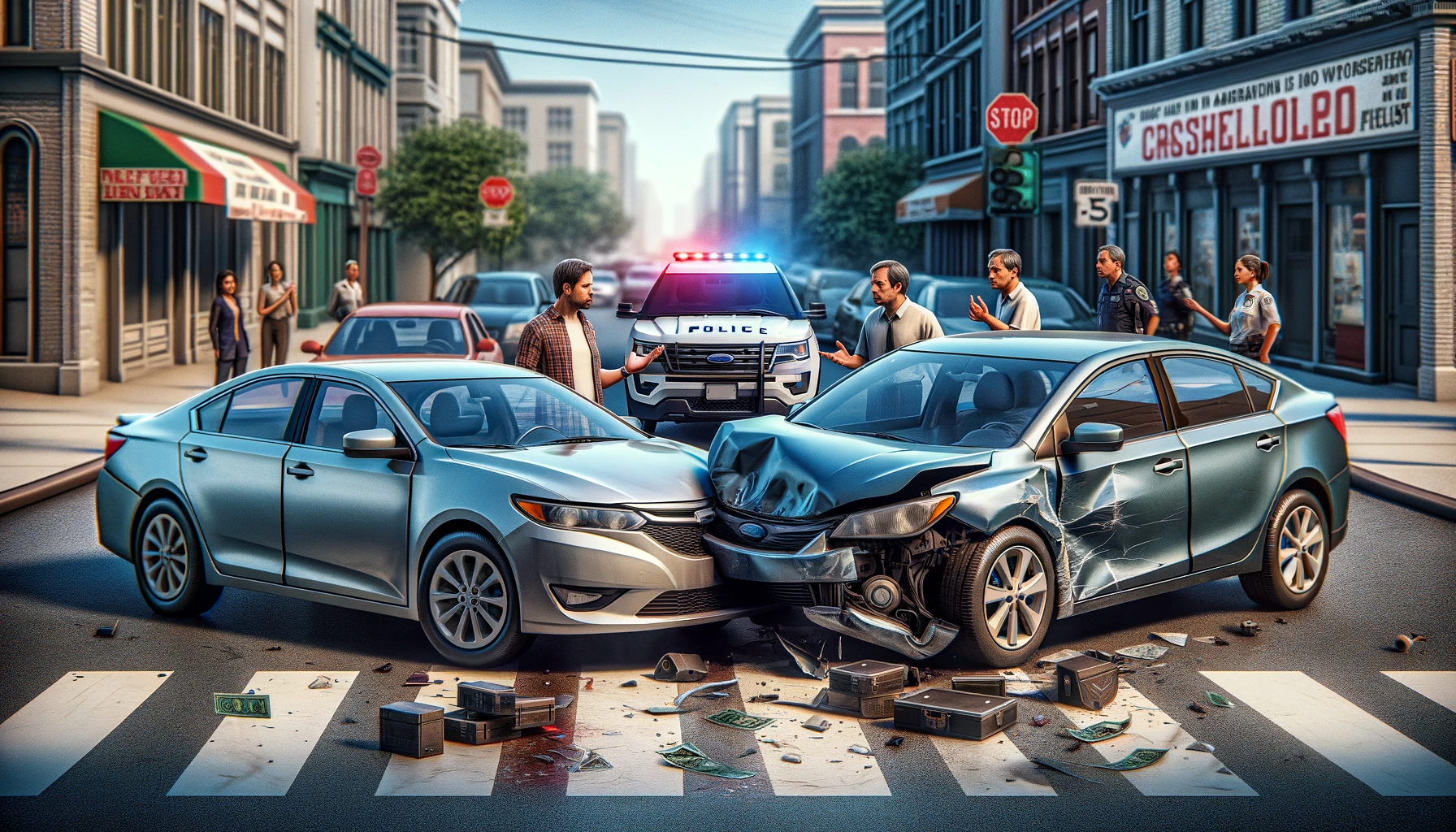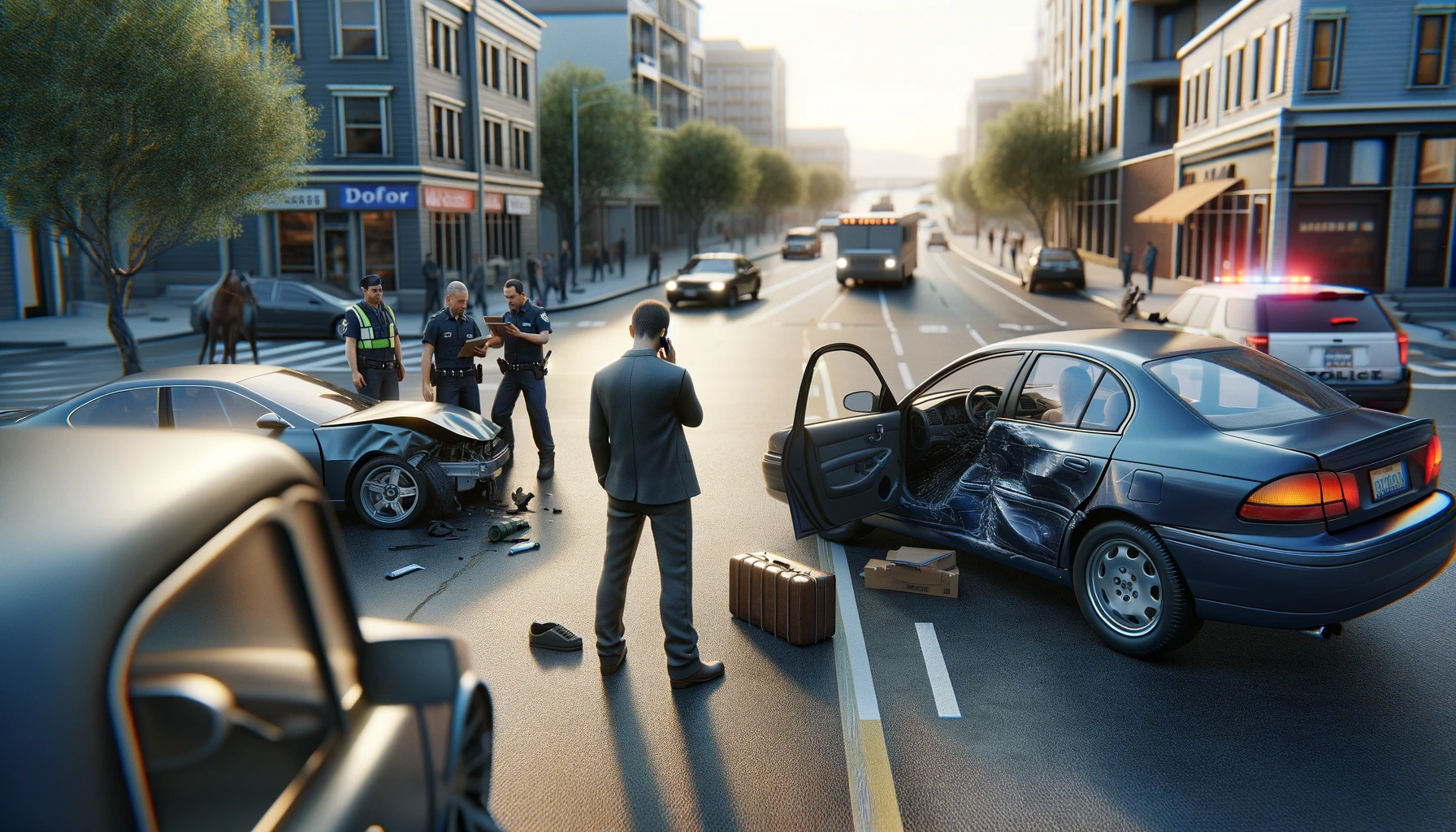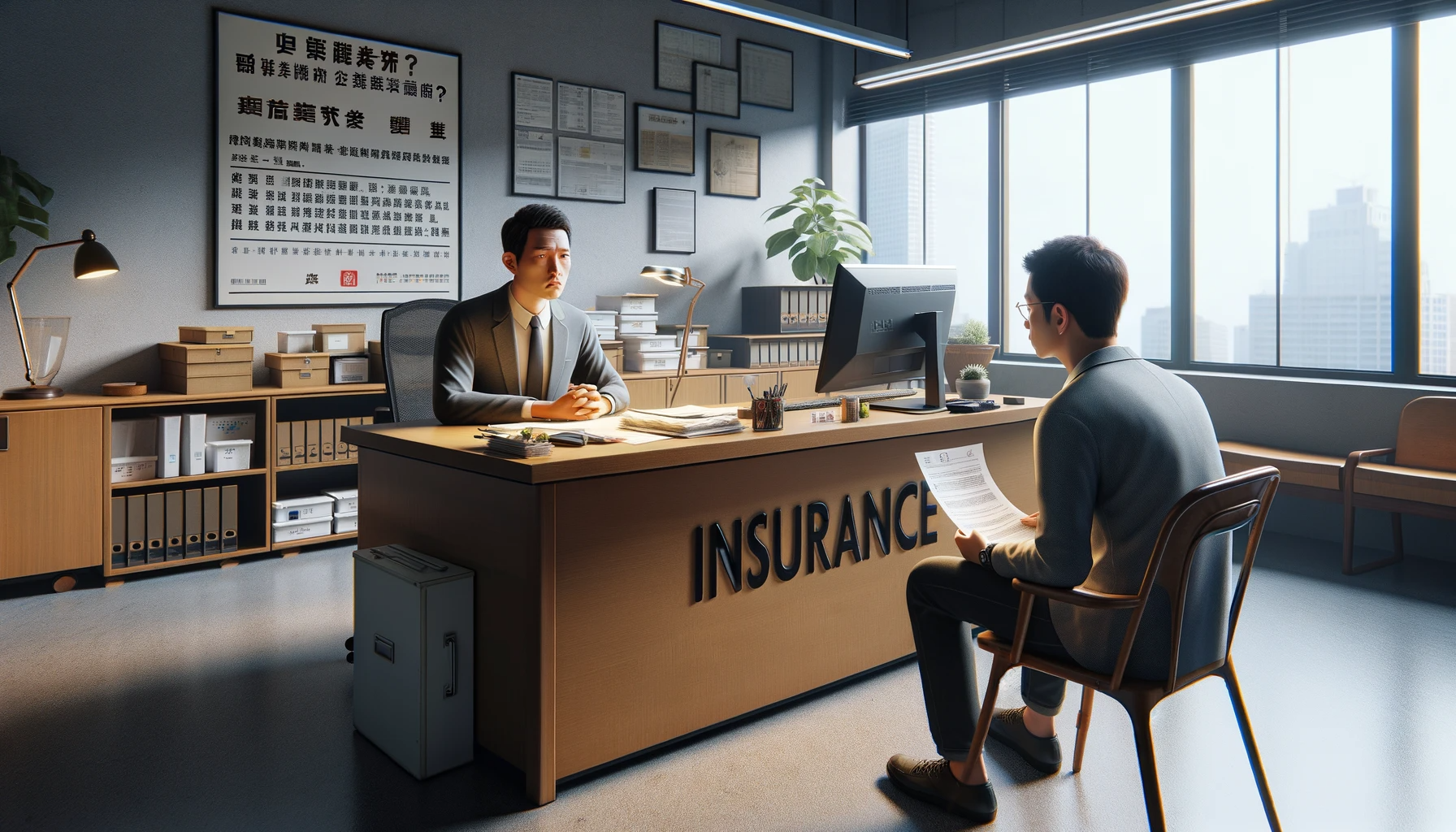Understanding Traffic Rules and Regulations
General Traffic Laws and Conduct
Pivotal to comprehending the responsibility in a car accident is a sound knowledge of standard traffic rules. These include not just written laws but accepted driver conduct as well. For instance, all drivers must follow the speed limit, adhere to stop signs and traffic lights, and yield right-of-way when necessary. Reckless driving like tailgating or executing dangerous overtakes are actions that can be ticketed. If an accident results from such behaviors, the driver committing them is typically at fault.
Understanding Right of Way Rules
Determining liability in a collision often involves figuring out who held the 'right-of-way'. For instance, a driver turning left generally has to give way to oncoming vehicles, and a driver merging onto a highway must give way to existing traffic. Ignoring these right-of-way rules can culminate in accidents. Drivers who don't respect others' right-of-way and cause a crash will likely be considered at fault.
Navigating Special Road Conditions
There are specific rules pertaining to unusual road conditions like construction zones, inclement weather, or night-driving. For example, drivers are expected to slow down in construction zones and during poor visibility situations, while high-beam headlights should be dimmed when there's oncoming traffic. Violation of these rules and causing an accident because of the negligence can lead to the driver being assigned fault.
Adherence to Signage and Signals
Road signals, signage, and road markings are designed to guide vehicle flow safely and orderly. They denote speed limits, warn of potential hazards, and instruct drivers when to stop or yield. Disregard for these clear instructions often results in collisions. Drivers who disobey traffic signals or signs and cause an accident in the process are usually deemed culpable.
Role of Seatbelts and Safety Equipment
Safety regulations require drivers and passengers to use seatbelts. Other laws involve proper use of safety equipment such as functioning brake lights, indicators, and rear-view mirrors. Failing to apply these safety measures can contribute to accident occurrence and severity. In some cases, lack of proper safety precautions may influence fault determination in a traffic accident.
Examining Physical Evidence at the Scene
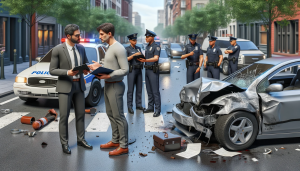
Locating and Identifying Physical Evidence
The first step in examining physical evidence at the scene of a traffic accident involves locating and identifying the evidence itself. Physical evidence can include vehicle fragments, skid marks, or damage to objects and structures near the accident. These pieces of evidence can provide important clues about the cause of the accident. For example, lengthy skid marks may indicate that a driver was speeding prior to the collision.
Assessing Vehicle Damage
Evaluating the extent and nature of damage to involved vehicles is a crucial phase of evidence examination. Note the location and severity of damages on each vehicle - the points of impact can often help establish which vehicle hit the other and possibly reveal the speed and direction of both vehicles. The final resting positions of the vehicles can also further assist in determining who might be at fault.
Looking for Traffic Violations
A traffic accident often involves one or more traffic violations. As such, it's important to identify any potential breaches of traffic laws— such as ignored stop signs, improper lane changes, or speeding—at the scene of the accident. Eye witness accounts can be helpful in this regard, as well as video footage if available.
Gathering Additional Evidence
Depending on the circumstances of the traffic accident, there may be additional, non-vehicle evidence to consider. This could include personal items thrown from vehicles due to impact, physical injuries sustained by drivers or passengers, or environmental conditions at the time of the accident. It's recommended to document all relevant information meticulously for later analysis.
Understanding the Role of Weather Conditions
In some cases, weather conditions can play a significant role in traffic accidents. If the incident occurred during poor weather, examining the impact of these conditions on the accident can be useful. For instance, rain might have made the roads slippery, or fog could have reduced visibility. Photographs of the weather conditions at the time of the accident can provide invaluable evidence in determining fault.
Eyewitness Accounts: The Silent Judge
The significance of eyewitness testimony
Eyewitness accounts can be a crucial piece of evidence when determining fault in a traffic accident. These are individuals who were present at the scene and directly witnessed the collision. They often offer an impartial perspective, as they generally have no vested interest in the outcome of the fault determination.
How to Gather Eyewitness Accounts
Immediately following an accident, it's beneficial to secure the accounts of any available witnesses. You should approach them calmly, explain the situation, and ask if they would mind sharing what they saw. It's essential to collect their contact details — name, phone number, and email address. This allows insurance adjusters or law enforcement officials to follow up with them later if necessary.
Reliability of Eyewitness Accounts
While eyewitness statements can be valuable, it's also important to consider that human memory is fallible. Factors like stress, distraction, or the angle from which the incident was observed can impact the accuracy of a witness's recollection. Therefore, these accounts should be viewed as part of a broader picture (including physical evidence, surveillance footage, etc.) when determining who is at fault.
Legal Aspect of Eyewitness Accounts
In some cases, witness accounts may be legally binding. Depending on the jurisdiction, a detailed, signed statement from an eyewitness may be admissible as evidence in court. It's advised that involved parties consult with a legal expert to understand how this applies to their specific circumstances.
Recording Eyewitness Accounts
When an eyewitness offers their account, it’s advisable to have their statement recorded, either in written format or a voice recording. This helps ensure the accuracy of the account when presented to the adjuster or used in any legal proceedings. Always seek the witness's permission before recording their statement in any format.
Role of Law Enforcement in Determining Fault
Gathering Evidence at the Accident Scene
Law enforcement officers play a vital role in determining fault in a traffic accident by collecting evidence at the scene. This encompasses photographs, eyewitness testimonies, physical evidence like skid marks or vehicle damages, and any relevant surveillance footage. The primary goal is to create a comprehensive picture of what transpired, focusing on contributing factors such as speed, direction, right of way, and possible violations of traffic laws.
Performing Field Sobriety Tests
In some incidents, suspicions may arise about the sobriety of the drivers involved. In such cases, law enforcement officers are responsible for conducting field sobriety tests or breathalyzer tests. If a driver fails these tests, it can significantly influence who is determined to be at fault. Impaired driving is a serious violation of the law, and it can automatically place the blame on the intoxicated party.
Compiling an Official Police Report
After gathering all necessary information and completing any tests, officers will compile an official police report. This document serves as a formal record of the incident and includes details such as the date, time, location, weather conditions, descriptions of the event, and potentially, an initial determination of fault. It's important to note that while this report carries weight, it is not the final word in deciding fault.
Issuing Traffic Citations
Citations or tickets issued by law enforcement officers at the scene also play a key role in determining fault. If a driver is cited for a specific traffic law violation that directly contributed to the accident, it can serve as significant evidence when determining fault. Such citations are often included in the official police report.
The Influence of Law Enforcement Findings on Insurance Claims
Finally, findings of law enforcement are typically utilized by insurance companies during their investigations. Insurers review the police report, photographs, citations, and other evidence collected by officers to help decide who was at fault. Nonetheless, insurers conduct their inquiries independent of law enforcement and might not always align with the police's initial fault determination.
How Insurance Companies Interpret Accident Reports
Understanding Accident Report Analysis
Insurance companies play a crucial role in deciphering accident reports post a traffic mishap. These reports are meticulously studied by the claims adjuster, who looks into every detail, including the involved parties, damage caused, and the circumstances leading to the accident. They don't merely rely on the police report; they also gather additional statements from witnesses, inspect the vehicle damages, and even visit the accident scene if necessary.
Scrutinizing Driver Statements and Witness Accounts
The statements provided by the drivers involved in the accident are thoroughly examined. Any inconsistency or contradiction can affect the claim processing. Witness accounts hold significant weightage in determining fault. Most insurance companies conduct independent interviews with the witnesses to cross-check the information provided in the accident report.
Investigating Vehicle Damage
Insurers also evaluate the extent and nature of the vehicle damage. The damage pattern gives insight into the impact angle and force, which can hint at the speed and direction of the vehicles at the time of the accident. This examination is crucial in understanding the chain of events leading to the collision, thus aiding in determining fault.
Studying the Accident Scene
Sometimes, insurers may deem it necessary to visit the accident scene. They study factors like road conditions, visibility, traffic control devices, and any relevant CCTV footage. This helps them get a firsthand perspective of the situation, facilitating a more accurate fault assessment.
Determining Fault And Liability
Based on all these analyses, insurance companies arrive at a decision regarding who was at fault. Depending on the state law, this could either be one party completely or both parties to varying degrees. The fault determination plays a significant role in deciding how much the insurance company will cover under the policy terms. In some cases, insurers may contest responsibility and negotiate fault percentages, especially in states following the comparative negligence rule.
Legal Consequences of Being at Fault
Liability and the Law
Being at fault in a car accident has several legal implications. In most jurisdictions, the person at fault for a traffic accident is legally responsible for all damages and injuries that result from the collision. This responsibility typically comes in the form of financial liability, meaning the at-fault driver's insurance company will be required to pay for the cost of repairs and any medical bills associated with the incident. It is important to note that this can differ depending on the insurance policies and laws prevalent in different regions.
Implications on Driving Records
In addition to financial obligations, being at fault in a traffic accident could also impact one's driving record. Traffic violations, such as speeding or reckless driving, are commonly noted on driving records. Accidents where the driver is found at fault are no exception. In some cases, repeated at-fault accidents might lead to the suspension of your driving privileges or even the revocation of your driver's license.
Potential Legal Penalties
Depending on the severity of the accident and the associated outcome, the at-fault driver could face more serious penalties. If an accident results in severe injury or death, the at-fault driver may be charged with vehicular manslaughter or a similar crime. These charges carry heavy penalties, often including fines, imprisonment, or both.
Influence on Insurance Premiums
Another consideration is the potential impact on insurance premiums. Insurers typically increase the rates for drivers who have been at fault in accidents, reflecting the increased risk they associate with insuring such drivers. This rate hike can last for several years. In extreme cases, some insurers might refuse to cover high-risk drivers entirely.
Civil Lawsuits
Lastly, being at fault in a traffic accident can expose you to a civil lawsuit. The other party involved in the crash can choose to sue for damages, which could include medical expenses, loss of earnings, property damage, and even emotional distress. This further emphasizes the importance of having sufficient liability insurance coverage to protect yourself in such scenarios.
Key Points to Remember When Involved in an Accident
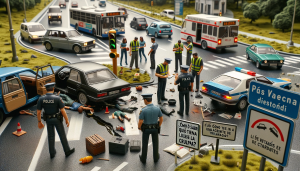
Staying Calm and Collected
Never let the initial shock of the accident cloud your judgement or actions. This is when it's essential to stay calm and composed, despite the stress of the situation. Doing so will allow you to handle the incident effectively and avoid any additional, unnecessary complications. Remember, elevated emotions can cause more harm than good.
Gather Necessary Information
It's vital to collect specific pieces of information at the scene of the accident, such as the other driver's name, contact details, license number, and insurance details. Also note down details about their vehicle like the make, model, color, and license plate number. In addition, take photographs of the accident scene, damage to vehicles involved, and any visible injuries.
Report the Incident
Next, report the accident to the necessary parties. Firstly, call the police to officially document the accident. When they arrive, ensure you tell them your account of what happened accurately, and get a copy of the report when available. Secondly, inform your insurance provider about the accident as soon as possible. Don't admit fault or liability to anyone at the scene, leave this determination to the authorities.
Seek Medical Attention
Even if you do not seem injured, it is recommended to seek medical attention after an accident. Some injuries might not be immediately noticeable but could have serious long-term effects. The medical report can also serve as evidence if you choose to file a claim.
Maintain Proper Record Keeping
Keep a record of everything related to your accident— receipts for any repairs done to your vehicle, medical bills, police reports, and even correspondence with your insurance company. These documents can help provide a clearer picture of the incident and may be used in determining who is at fault.
Conclusion
Determining fault in a traffic accident can be a multifaceted process that entails the collection of evidence, evaluation of damages, and consideration of numerous factors. It is imperative to approach this task with thoroughness and a methodical approach to accurately establish liability. Keep in mind that comprehending fault is vital for insurance claims and legal proceedings, so it is important to take the requisite measures to safeguard your interests.
Look for an attorney who has the right legal resources for your legal needs.
Contact us here on the
Warmuth Law website or through our hotline 888-517-9888.
Frequently Asked Questions (FAQ's)
Is fault always clear-cut in a traffic accident?
Not necessarily. Often, determining fault in a traffic accident requires a comprehensive investigation, and even then, there can be disagreements and disputes over the responsible party.
Can a traffic ticket automatically determine fault?
No, receiving a traffic ticket does not automatically establish fault in an accident. While it can be a contributing factor, the overall circumstances surrounding the collision play a more significant role in determining liability.
What if both parties in the accident claim the other is at fault?
In situations where both parties involved in the accident blame each other, insurance companies and legal experts may need to conduct thorough investigations and review available evidence to establish liability accurately.
Do witnesses play a significant role in determining fault?
Certainly, witnesses can play a crucial role in the determination of fault. Their firsthand accounts of the accident can provide valuable insights into how the incident unfolded and who may bear responsibility.
Should I always involve the police in a traffic accident, even for minor incidents?
It is generally advisable to involve the police in any traffic accident, including minor ones. Their official report can be invaluable for insurance claims and the accurate determination of fault, helping to ensure a clear and documented record of the incident.




